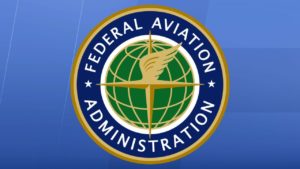


 Are you ready for new FAA regulations?
Are you ready for new FAA regulations?
The FAA has released a document outlining compliance measures with the Remote ID rule, otherwise known as Part 89, which requires all drones be equipped with new Remote ID recognition and tracking technology in order to further integrate UAVs into the National Airspace System (NAS).
Beginning on September 16, 2023 all pilots who are required to register their UAS must follow the new rule, which requires drones to either have a native Remote ID or be fitted with a Remote ID broadcast module like a portable transmitter. If the drone has a broadcast module, the FAA website says that the drone must be operated within visual line-of-sight.
If your drone is NOT Remote ID compliant or equipped with a Remote ID broadcast module, you may only fly in designated FAA-recognized identification areas (FRIA), sponsored by “community-based organizations (CBOs) or educational institutions,” such as AMA flying fields.
You can learn more on the FAA’s website here.
Is my drone compliant? Check Here.
While Remote ID rules are only now being applied to pilots, the industry has been preparing for the new regulations since it was published in 2021. Manufacturers were required to comply as of Sept. 16, 2022, meaning that all new drones sold should have Remote ID technology. To make sure that you’re good to fly, check the Public DOC list, published by the FAA, and filter by RID to confirm that your UAV or broadcast module is in compliance with the rule.
What is Remote ID?
Not sure what Part 89 is, or how it may impact you? Remote ID, which broadcasts both the location and key information about its attached UAV, has been compared to a “digital license plate.” Remote ID makes it easier for regulators to identify drones that may be breaking the rules to encourage compliance and enable safe commercial drone flight at scale. You can learn more about the policy, and the requirements for manufacturers, in our article here, and on the FAA website at the links above.
Read more:
Ian McNabb is a staff writer based in Boston, MA. His interests include geopolitics, emerging technologies, environmental sustainability, and Boston College sports.
Miriam McNabb is the Editor-in-Chief of DRONELIFE and CEO of JobForDrones, a professional drone services marketplace, and a fascinated observer of the emerging drone industry and the regulatory environment for drones. Miriam has penned over 3,000 articles focused on the commercial drone space and is an international speaker and recognized figure in the industry. Miriam has a degree from the University of Chicago and over 20 years of experience in high tech sales and marketing for new technologies.
For drone industry consulting or writing, Email Miriam.
TWITTER:@spaldingbarker
Subscribe to DroneLife here.





Related Posts
Blue Marble Shows How AI and LiDAR Deliver ROI for Rail Operators
First Breach and ideaForge Establish US Drone Manufacturing Partnership
Tennessee Drone and AAM Symposium Discusses Future of Mobility